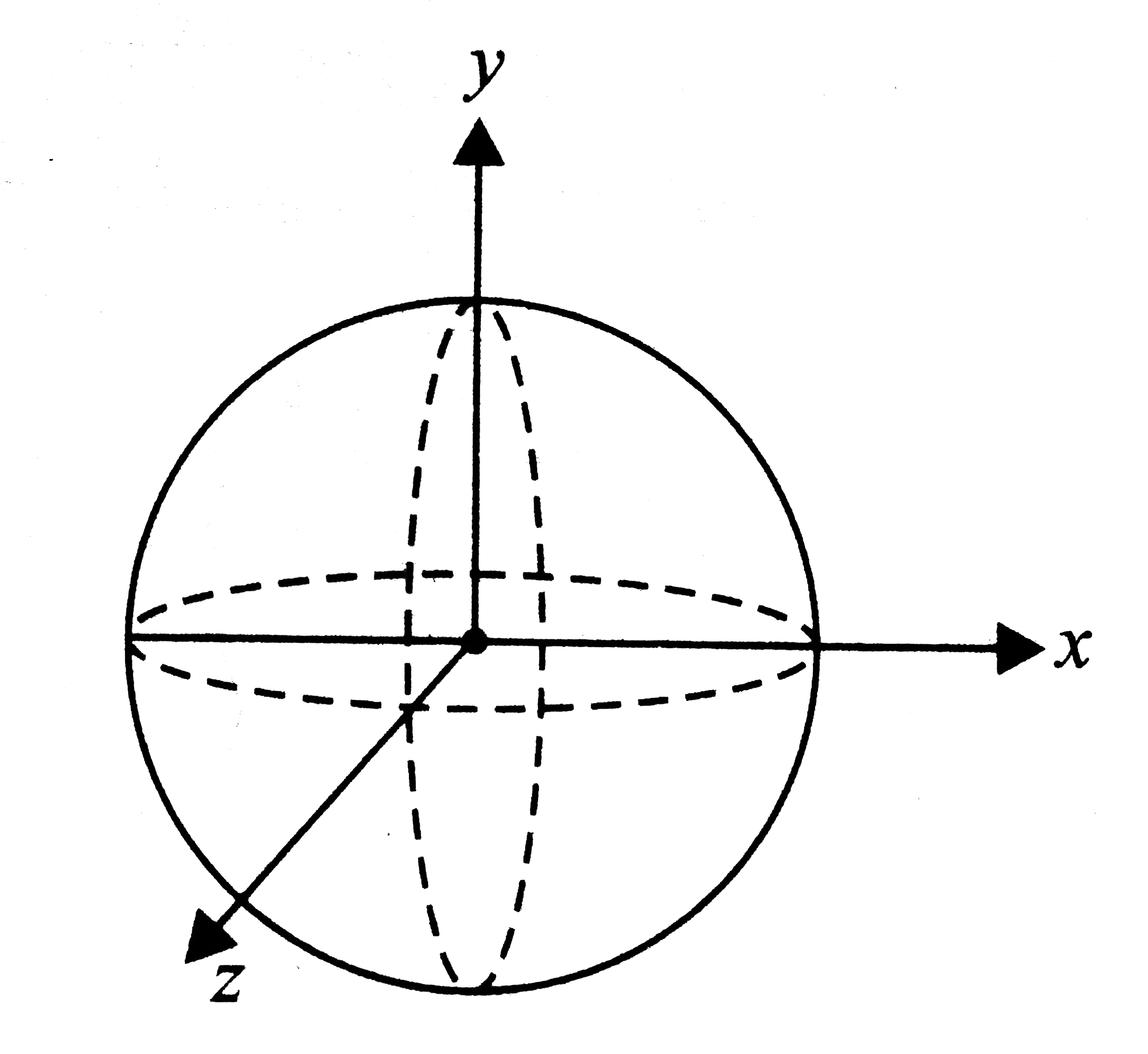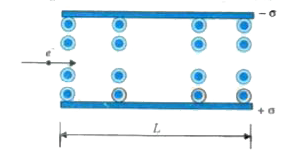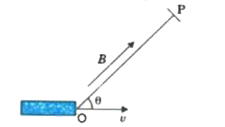Complete Solutions to Higher Order Thinking Skills & Advanced Level of chapter MOVING CHARGES AND MAGNETISM of Class 12 book with complete answers and questions
| Class 12 | PHYSICS |
| Chapter | MOVING CHARGES AND MAGNETISM |
| MODERN PUBLICATION | Higher Order Thinking Skills & Advanced Level |
| Number Of Questions | 10 |
| Academic Year | 2023-24 |
Three rings, each having equal radius R, are placed mutually perpendicular to each other and each having its centre at the origin of coordinate system. If current I is flowing through each ring, then the magnitude of the magnetic field at the common centre is

View SolutionA uniform magnetic field (B) is applied between the plates of a capacitor in the outward direction as shown in the figure. Surface charge density on the capacitor plates is `sigma`.

An electron is fired in between the plates, parallel to them, as shown in the figure. The electron is found to move straight in-between the plates of capacitor. Neglect the gravity. If L is the length of the plates then caleulate the time taken by the electron to cross the plates.
View SolutionA magnetic field of `vecB = 1 xx 10^(-2) hatk` tesla applies a force of `vec F = (36 hat I + 12 hat j) xx 10^(-23)` newton on a proton. Calculate the velocity of proton.
View SolutionA charged particle is projected in a magnetic field of `(5 hat I + 9 hat j ) m T` and its acceleration is found to be `(9 hat I - x hat j ) xx 10^(-6) m//s^(2)`. What should be the value of x?
View SolutionProtons and deuterons are accelerated through a same potential difference before they enter a region of uniform magnetic field applied perpendicular to their motion. If protons describe a circle of radius 10 cm then what will be the radius of circle of a deuteron?
View SolutionAn electron beam with equivalent electric current I enters a region of crossed electric field and magnetic field B. Both the fields are uniform. It is found that the electron beam goes undeviated through the region of fields. After passing the field region, electrons hit a grounded target. How much force is exerted by the electron beam on urget? Assumem is the mass of electron and e its charge.
View SolutionOne electron gun is firing electrons with a speed V as shown in the figure. There is a target P which is to be hit. Electrons emerge from point 0 and line OP makes an angle with the direction of velocity of electrons. The length of OP is L.A uniform magnetic field B is applied parallel to line OP. Charge on the electron ise and the mass of electrons is m. What minimum magnetic field is needed so that electrons may hit the target P?

View SolutionA conducting cylinder of length L is placed on a rough horizontal floor. A horizontal magnetic field is applied perpendicular to the length of cylinder. `F_(1)" and " F_(2)` are the minimum forces required to move the cylinder for two possible directions of current, which can be passed through the cylinder. Calculate the coefficient of friction between the floor and the cylinder. Assume `F_(1) gt F_(2)`.
View SolutionAn electron in a hydrogen atom is in an excited state and corresponding principal quantum number is n. Obtain the expression for orbital magnetic moment of electron. Charge on electron is e, mass of electron is m.
View SolutionAn electron gun fires electrons after accelerating them through a potential difference V. Electrons are coming out from a tiny hole. Most of the electrons go straight but some of them make a slightly divergent angle. A uniform magnetic field can be set up along the direction of motion of electrons. These slightly diverged electrons are to be brought to focus at a distance I from the point of exit from the electron gun. If `B_(1)` , is the minimum magnetic field needed to focus the electrons and `B_(2)`, is the next possible higher value of magnetic field, calculate e/m for the electrons.
View Solution
Higher Order Thinking Skills & Advanced Level questions and complete solutions for chapter MOVING CHARGES AND MAGNETISM of MODERN PUBLISHERS PHYSICS (HINGLISH) of Class 12
All Exercises from MODERN PUBLICATION Class 12 PHYSICS MOVING CHARGES AND MAGNETISM
- CHAPTER PRACTICE TEST
- COMPETITION FILE (A. MULTIPLE CHOICE QUESTIONS)
- COMPETITION FILE (ASSERTION TYPE QUESTIONS)
- COMPETITION FILE (B. MULTIPLE CHOICE QUESTIONS)
- COMPETITION FILE (C. MULTIPLE CHOICE QUESTIONS)
- COMPETITION FILE (D. MULTIPLE CHOICE QUESTIONS)
- COMPETITION FILE (INTEGER TYPE QUESTIONS)
- COMPETITION FILE (MATRIX MATCH TYPE QUESTIONS)
- Conceptual Questions
- Higher Order Thinking Skills & Advanced Level
- NCERT (Exemplar Problems ) (Short Answer Type Questions )
- NCERT (Exemplar Problems ) (Very Short Answer Type Questions )
- NCERT (Exemplar Problems ) Objective Questions (MCQ Type - I)
- NCERT (Exemplar Problems ) Objective Questions (MCQ Type - II)
- NCERT FILE (NCERT Additional Exercises)
- NCERT FILE (NCERT Textbook Exercises)
- PRACTICE PROBLEMS
- Revision Exercises (Additional Questions )
- Revision Exercises (Fill in the Blanks )
- Revision Exercises (Long Answer Questions )
- Revision Exercises (Numerical Problems )
- Revision Exercises (Short Answer Questions )
- Revision Exercises (Very Short Answer Questions )
- SOLVED EXAMPLES
- Tough & Tricky (PROBLEMS )